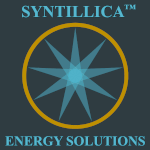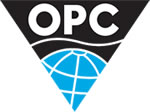Middle East / Africa
Country profile: Mauritania
| Location: | Northern Africa, bordering the North Atlantic Ocean, between Senegal and Western Sahara |
| Climate: | desert; constantly hot, dry, dusty |
| Terrain: | mostly barren, flat plains of the Sahara; some central hills |
| Size: | 1030700 sq. km total (Land area: 1030400 sq. km Water area: 300 sq.km) |
| Population: | 3,364,940 (July 2008 est.) |
| Languages: | Arabic (official), Pulaar, Soninke, French, Hassaniya, Wolof |
| Government: | Democratic Republic |
| Capital city: | Nouakchott |
| Legal system: | a combination of Islamic law and French civil law; has not accepted compulsory ICJ jurisdiction |
| Currency: | ouguiya (MRO) |
| Licensing: |
Country profile
Mauritania, located on the northwest coast of Africa, gained its independence from France in 1960. In August 2005, a bloodless coup ousted President Taya, who had come to power in a coup in 1984, and installed a military council led by Colonel Ely Ould Mohamed Fal. The military council has stated its intention of remaining in power for up to two years while it works to create a democratic institution and hold organized elections. Under former President Taya, the Mauritanian government worked to reduce poverty, improve the health and education systems and promote privatization of government-owned businesses.
Historically, Mauritania has experienced economic growth from the iron ore and fishing industries. However, in February 2006, Mauritania began producing oil for the first time, and oil stand to bolster future economic growth in the country. Mauritania's real gross domestic product (GDP) grew an estimated 5.4 percent in 2005 and is projected to grow by 26.0 percent in 2006. Currently, Mauritania is the poorest country in the Arab Maghreb Union (AMU) which includes the countries Morocco , Tunisia , Algeria and Libya . Mauritania’s per capita income is only $443, with almost 30 percent of the population living on less than $1 a day, and 69 percent living on less than $2 a day. Despite government reforms set in place since 1992, Mauritania still experiences occasional periods of high inflation. In the second half of 2004, prices rose because of food shortages, bringing the inflation rate for the year to 10.1 percent. In 2005, due in part to high oil prices, inflation remained high at 14.0 percent. An 8.0 percent inflation rate is forecast for 2006.
In 2002, Mauritania completed the World Bank/International Monetary Fund (IMF) heavily indebted poor countries (HIPC) initiative. This led to debt relief of $1.1 billion, which almost halved Mauritania's net debt burden. Despite its improving economic environment, Mauritania remains vulnerable to several sources of instability. With an economy strongly reliant upon primary products (mining, fishing, and agriculture), fluctuations in international markets, as well as external shocks like weather, can have a profound impact on Mauritania. In 2006, the U.S. government removed Mauritania from eligibility for the African Growth and Opportunity Act (AGOA) , due to not meeting requirements set forth under the act. To maintain eligibility status for the AGOA, African countries are required to have established, or be working towards the establishment of various reforms set forth under section 506A(a)(1) of the AGOA, which include market-based economies, the rule of law and political pluralism, protection of human rights and worker rights and policies to reduce poverty.
Energy
In February 2006, Mauritania began producing its first oil from the Chinguetti oilfield , which is located offshore 56 miles southwest of Nouakchott. The field has estimated proven reserves of 123 million barrels of oil. Currently, the field is producing around 15,000 barrels per day (bbl/d), but output is expected to reach capacity of 75,000 bbl/d by the end of 2006. Woodside Petroleum operates the Chinguetti field with a 47.38 percent interest and is joined with partners Hardman Resources (19.01 percent), Mauritanian-government controlled Société Mauritanienne des Hydrocarbures (12 percent), BG Group (10.23 percent), Premier Oil (8.12 percent) and Roc Oil (3.25 percent). The Mauritanian government created the national oil company in 2004.
In addition to Chinguetti field, Mauritania possesses several other promising offshore oil and gas fields. The Tiof oilfield, which is located 16 miles north of the Chinguetti field, may contain up to 350 million barrels of oil. The Tiof-6 exploration well was drilled successfully in February 2005. Woodside and its partners believe that the field may start producing at 50,000 bbl/d in mid-2007, with production potentially rising to 150,000 bbl/d in 2008. The Banda field, located 12 miles east of Nouakchott, may contain natural gas reserves of 3-5 trillion cubic feet (Tcf), while the Pelican natural gas field is estimated to hold 1 to 1.5 Tcf. UK-based Dana Petroleum is working with LNG operators to determine development options for the Pelican field.
With Mauritania's best offshore blocks under contract, other companies have lined up to explore onshore blocks, particularly in the Taoudeni Basin in the northeastern part of the Mauritanian desert. In January 2005, France's Total signed two production sharing contracts, covering nearly 22,394 square miles. Spain's Repsol, China National Petroleum Co. and Woodside Petroleum are among the companies that have been awarded Taoudeni blocks.
In March 2005, the Mauritanian government created a separate ministry of oil and energy to handle the energy portfolio. The ministry is headed by Mohamed Aly Ould Sidi Mohamed. In 2005, Mauritania imported 24,000 bbl/d of petroleum products, as its refinery is not in use. Mauritania also consumes a significant amount of "non-commercial" (i.e., wood, biomass) energy.
Energy production and consumption
| Oil | Gas | |
| Production: | 75,000 bbl/day (2006 est.) | |
| Consumption: | 20,000 bbl/day (2006 est.) | |
| Exports: | ||
| Imports: | 19,960 bbl/day (2004 est.) | |
| Reserves: | ||
| Major fields: |
Mauritania - recent news
| 23 Jun 25 |
Mauritania/Senegal: Kosmos Energy confirms Commercial Operations Date reached for Golar’s FLNG Gimi at Greater Tortue Ahmeyim Kosmos Energy notes the announcement by Golar LNG that the FLNG Gimi has reached Commercial Operations Date ('COD') for the 20-year Lease and Operate Agreement with BP for the Greater Tortue Ahmeyim (GTA) project offshore Mauritania and Senegal. |
| 08 May 25 |
Mauritania: Oceaneering announces award of inspection, maintenance, and repair contract by bp Mauritania Oceaneering International announced that its Offshore Projects Group ('OPG') has been awarded a multi-year contract by bp Mauritania Investments for the provision of subsea inspection, maintenance, and repair (IMR) services and remotely operated vehicle (ROV) services in the Greater Tortue Ahmeyim field. |
| 18 Apr 25 |
Mauritania/Senegal: bp completes loading of first cargo from Greater Tortue Ahmeyim LNG project bp has safely loaded the first cargo of liquefied natural gas (LNG) for export from its GTA Phase 1 project offshore Mauritania and Senegal. This follows flow of first gas from the project, announced earlier this year. |
| 16 Apr 25 |
Mauritania: TGS expands multi-client data library offshore Mauritania with over 101,000 sq kms of 3D seismic data TGS has announced the significant expansion of its multi-client data library offshore Mauritania, with the addition of over 101,500 sq kms of high-quality 3D seismic data. The expansion adds to the existing library of over 19,000 sq kms of reprocessed PSDM 3D seismic data and multiple regional 2D seismic surveys. |
| 10 Feb 25 |
Mauritania/Senegal: Kosmos Energy announces first LNG at the bp-operated Greater Tortue Ahmeyim Project in Mauritania and Senegal Kosmos Energy has announced that first liquified natural gas (LNG) production has been achieved at the bp-operated Greater Tortue Ahmeyim (GTA) LNG project, offshore Mauritania & Senegal. |
Mauritania - more news
Other countries in this region
- Algeria,
- Angola,
- Bahrain,
- Benin,
- Botswana,
- Burundi,
- Cameroon,
- Central Africa Republic,
- Chad,
- Comoros,
- Congo (Brazzaville),
- Congo (Democratic Rep.),
- Cote d'Ivoire,
- Djibouti,
- Egypt,
- Equatorial Guinea,
- Eritrea,
- Ethiopia,
- Gabon,
- Gambia,
- Ghana,
- Guinea (Republic),
- Guinea Bissau,
- Iran,
- Iraq,
- Israel,
- Jordan,
- Kenya,
- Kuwait,
- Lebanon,
- Liberia,
- Libya,
- Madagascar,
- Malawi,
- Mali,
- Mauritius,
- Morocco,
- Mozambique,
- Namibia,
- Niger,
- Nigeria,
- Oman,
- Palestine,
- Qatar,
- Rwanda,
- Sao Tome,
- Saudi Arabia,
- Senegal,
- Seychelles,
- Sierra Leone,
- Somalia,
- Somaliland,
- South Africa,
- South Sudan,
- Sudan,
- Syria,
- Tanzania,
- Togo,
- Tunisia,
- Uganda,
- United Arab Emirates,
- Western Sahara,
- Yemen,
- Zambia,
- Zanzibar,
- Zimbabwe












